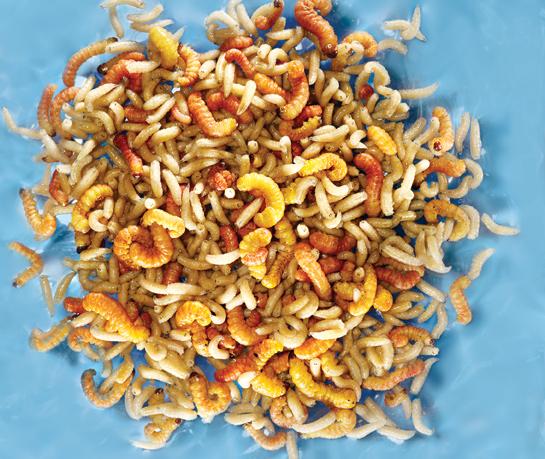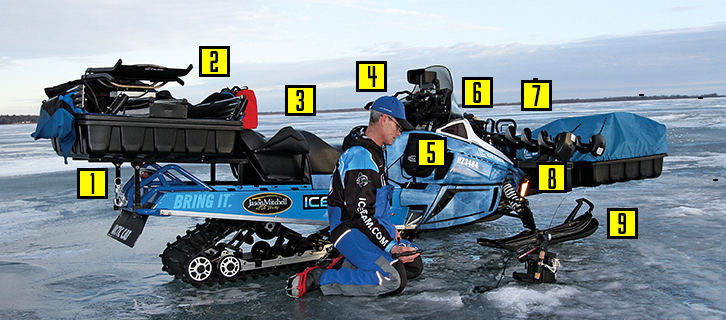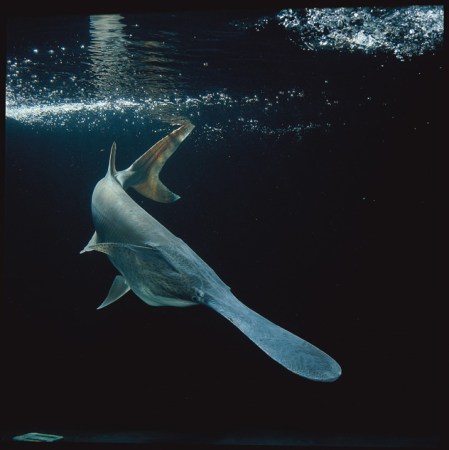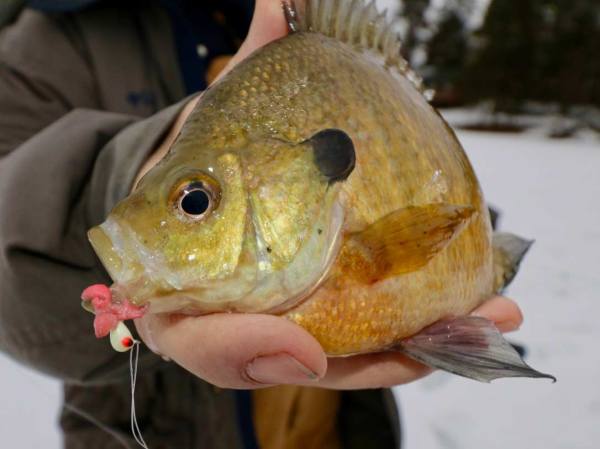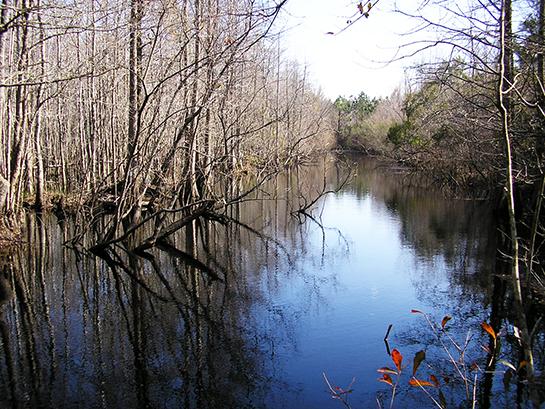There’s little pretentiousness involved in hard-water fishing. Make no mistake, this is not angling. The phrase “catch-and-release” is rarely uttered. Winter fishermen brave the elements for the sole purpose of catching fish–as many as possible–and their go-to bait is the stuff of horror films.
Although fish seldom see these larval forms of terrestrial insects in nature, they’re nevertheless among the most effective of all icefishing baits for panfish and trout. These baits can be fished on a plain size 8 or 10 hook, but most anglers use them to tip tiny teardrop jigging spoons or jigs. On some days, fish seem to prefer the look and smell of a hook crammed full of larvae while on others a single wiggling bait will do. The key is to experiment and keep bait lively by not allowing it to freeze.

The most popular of all of these icefishing baits, wax worms, or waxies, are the larvae of the bee moth. They can be found in the cells of neglected beehives, where they feed on beeswax. From ½ to 1 inch long, they have a cream-colored body with a brown head.

Sometimes called silver wigglers, spikes are housefly or blowfly maggots. Cream or light tan in color, they’re a little smaller than waxies, but their skin is tougher so they don’t tear off the hook as easily. Spikes are especially effective for panfish and trout.

Seldom sold in bait shops, these tiny whitish grubs live inside the galls or swellings on the stems of goldenrod plants. You can collect the galls in fall through winter and remove the grubs as you need them. Fish them on a bare hook or with plastics and a 1⁄64 or 1⁄128 jighead.

Also called rat-tailed maggots, mousies are bee fly larvae. Tannish in color, with a body about ½-inch long, they live in stagnant water and use their long, tubelike tail to breathe. While they are an effective bait, their skin is delicate, so they tear off the hook quite easily.

Similar to spikes, Eurolarvae are European blowfly maggots that have been fed dyed food to turn them a variety of colors, including red, blue, orange, yellow, and white. Because of their small size, anglers often gob three or four of them on the hook or jighead.
